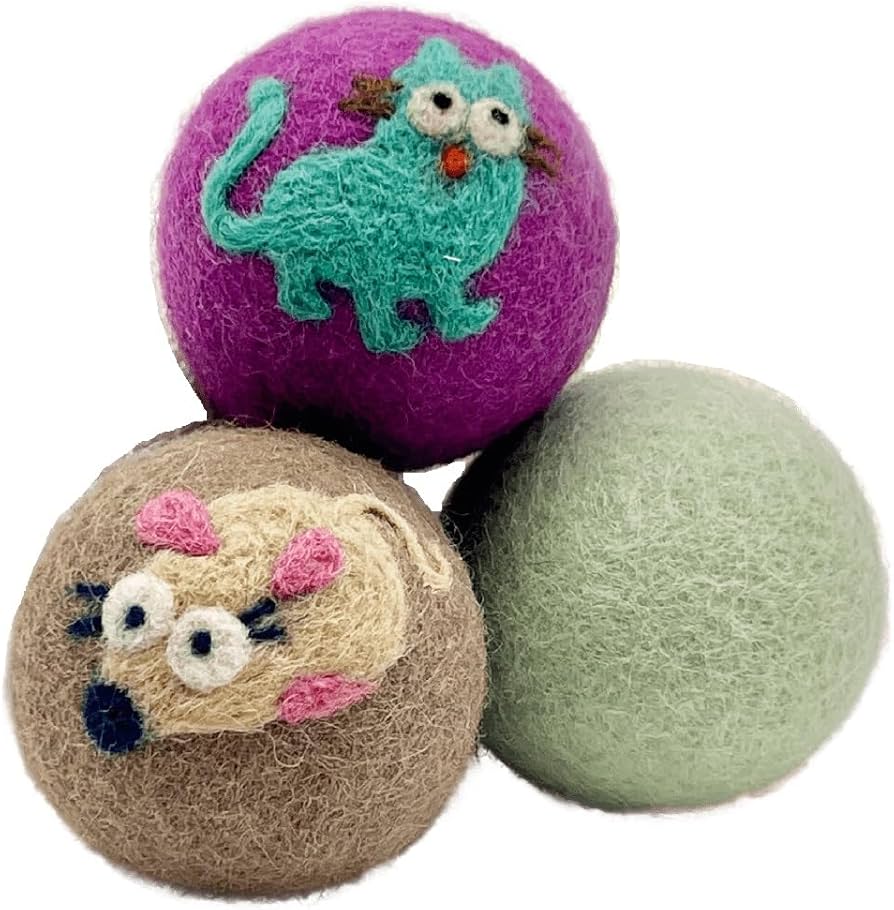
Researchers Employ Tiny Crochet Headwear to Investigate Chronic Pain in Felines

## Felines in Fashionable Crochet Hats: A Breakthrough in Pain Research for Cats
At first sight, cats donning charming crochet hats may seem like a whimsical internet phenomenon or a fun photo opportunity. Nevertheless, in this scenario, it’s all about scientific advancement. These stylish kitties are actively involved in a significant study carried out at the [Faculty of Veterinary Medicine, University of Montreal](https://www.umontreal.ca/), which seeks to delve into the ways cats endure chronic pain. The presence of these tiny crochet hats is an ingenious approach that enabled researchers to perform the study in a non-invasive and feline-friendly manner.
### Why Utilize Crochet Hats?
The research team endeavored to implement *electroencephalography* (EEG), a non-invasive technique for gauging brain activity that involves the placement of electrodes on the subject’s head. However, a pivotal challenge arose: ensuring the electrodes remained affixed to the heads of the 11 participating felines. Cats, being innately inquisitive, often batted, shook off, or attempted to chew the apparatus.
Dr. Aude Castel, an Assistant Professor at the University of Montreal, and her colleagues needed to devise a creative solution. “Since the cats would shake their heads and play with or chew our EEG electrodes, we conceived the idea of the little knitted hat to secure the electrodes,” Dr. Castel noted. The petite crochet hats ensured the electrodes stayed in place while remaining out of reach from the cats’ curious paws. Using a bit of positive reinforcement and some delightful treats, the cats quickly acclimated to their stylish new gear.
### The Aim: Gaining Insight into Chronic Pain in Cats
The study’s ambitions extend well beyond the charming aesthetics of the hats. Research indicates that *over 25% of adult cats suffer from chronic pain*, predominantly due to ailments such as osteoarthritis—a pressing concern that often intensifies with age. Currently, options for treating feline chronic pain are sparse, and many existing treatments can have adverse side effects.
The Montreal research team aimed to investigate various sensory stimuli (e.g., scents, sounds, and visual light) and examine the responses of feline brain activity to these stimuli via EEG technology. They concentrated on determining if any of these stimuli might influence the cats’ pain perception, potentially leading to new, non-invasive treatment routes.
Dr. Castel explained further: “We aimed to expose them to various stimuli because we wanted to observe if, similarly to humans, we could influence their brain activity and consequently their perception of pain through sensory stimulation.”
### The Study: Evaluating Sensory Inputs
Throughout the research, the scientists exposed the cats to a series of sensory stimuli, including:
– **Citrus aromas** – scents often linked by humans to freshness, which might evoke calming or stimulating reactions in felines.
– **Varied light wavelengths** – exposure to different colors and intensities of light, a technique recognized for its potential in mood and pain management in people.
By monitoring the brainwave patterns of the 11 cats, the researchers aimed to identify specific responses that might signify diminished pain perception resulting from sensory modulation.
### The Findings: Collecting Valuable Insights
Thanks to the crocheted hats, the majority of the EEG data was successfully gathered, providing researchers with comprehensive insights into feline brain responses to the stimuli. While some recordings were compromised due to movement interference from the cats, most of the data proved crucial for deciphering how cats perceive pain. Although the study is still in its preliminary phases, it has already yielded fresh perspectives on feline chronic pain and brain function.
This research also signifies an essential achievement: it’s the *first successful EEG study on alert cats* with surface electrodes, representing a significant breakthrough for animal-friendly research. The Montreal team is optimistic that their discoveries will guide the development of new non-invasive treatments for cats enduring painful chronic issues, enhancing both the quality of care and animal welfare. They also anticipate broadening their research and potentially applying these strategies to other animals experiencing chronic pain.
### The Road Ahead: What’s Next?
With this innovative methodology, the team at the University of Montreal has not only facilitated a more pet-friendly EEG testing experience but has also paved the way for groundbreaking pain management strategies. In the future, cats might benefit from treatments that avoid risky medications, instead relying on sensory experiences like particular sounds, sights, or scents to alleviate their discomfort.
If these approaches prove effective, the implications of the study could transcend beyond cats, potentially establishing a framework for treating chronic pain in other species—perhaps even humans. This endeavor exemplifies the fusion of creativity and science, merging innovation with compassion to enhance the lives of our furry friends.
For those who wish to explore the technical details of this work, the [full report is available here](https://www.sciencedirect.com/science/article/pii/S0165027024001997#fig0005).
—
### Relevant Research and Insights